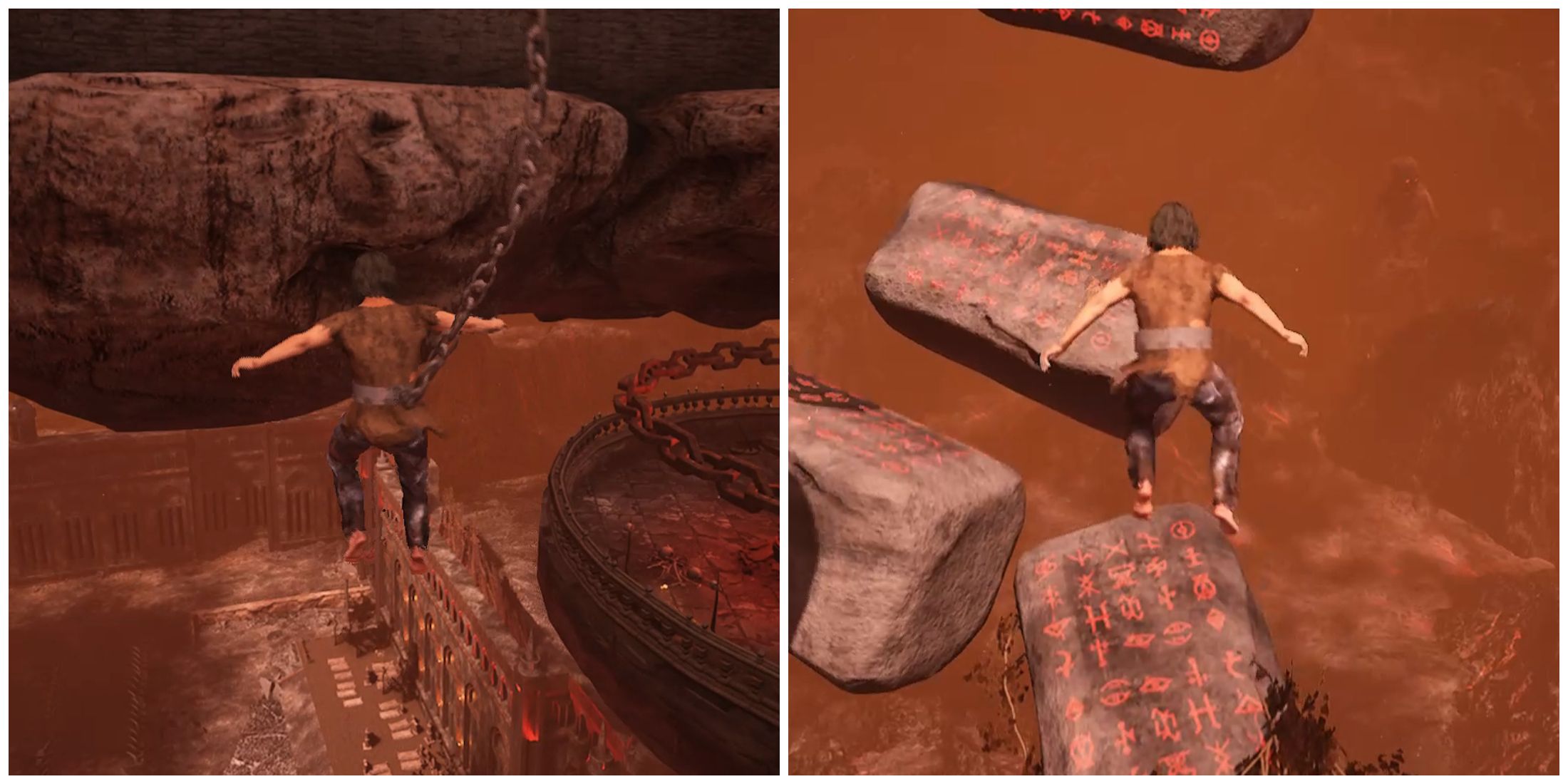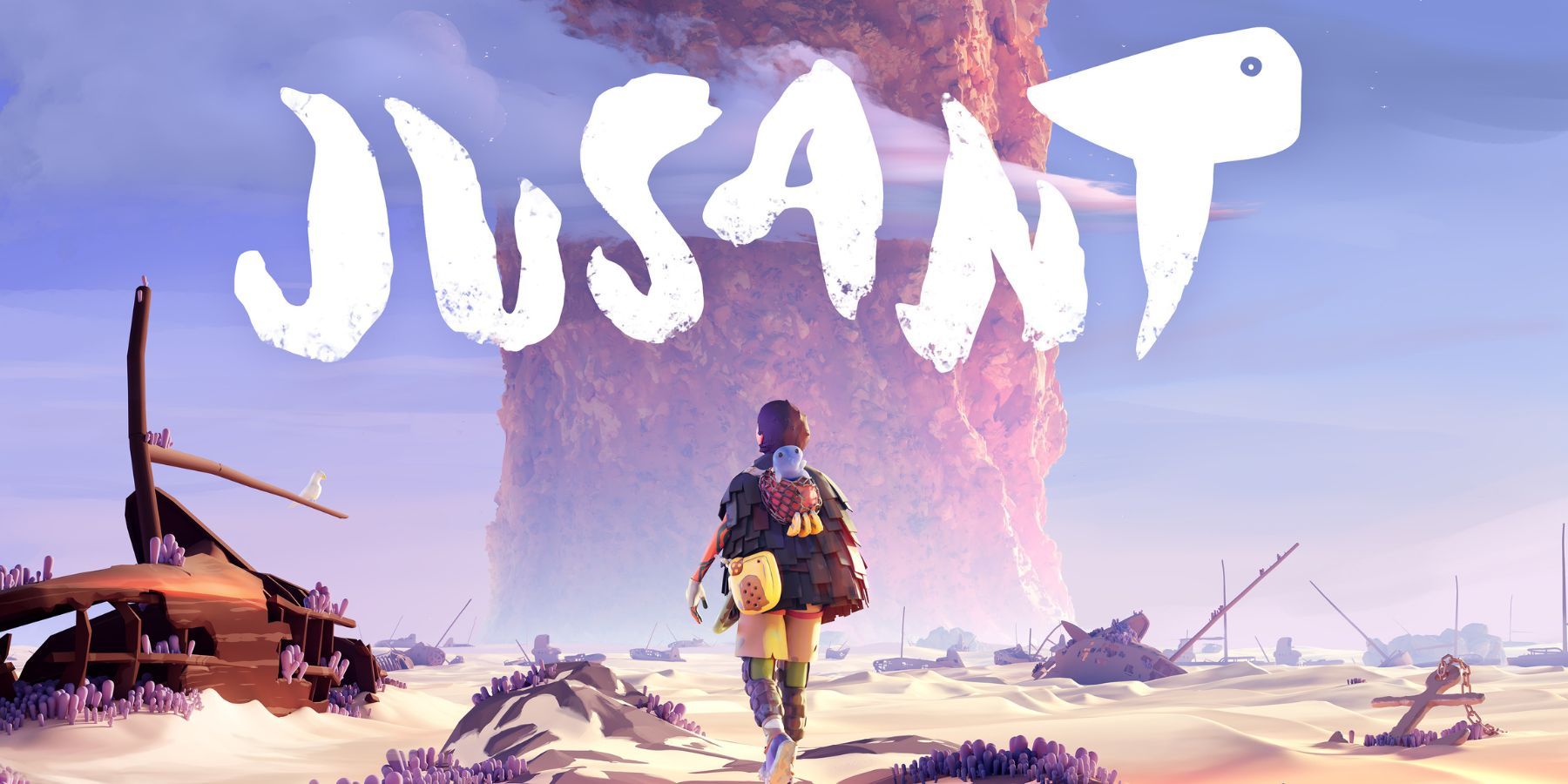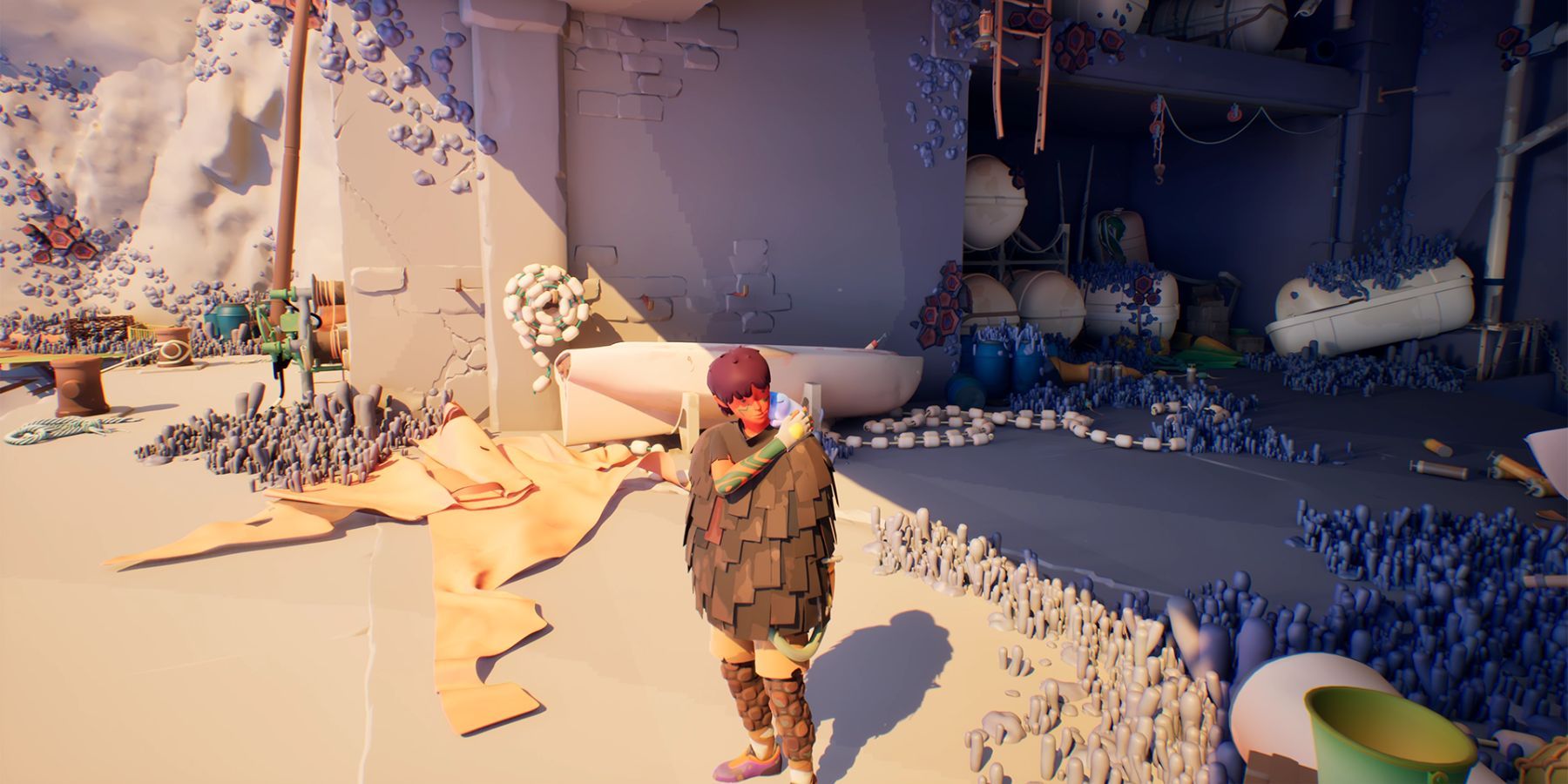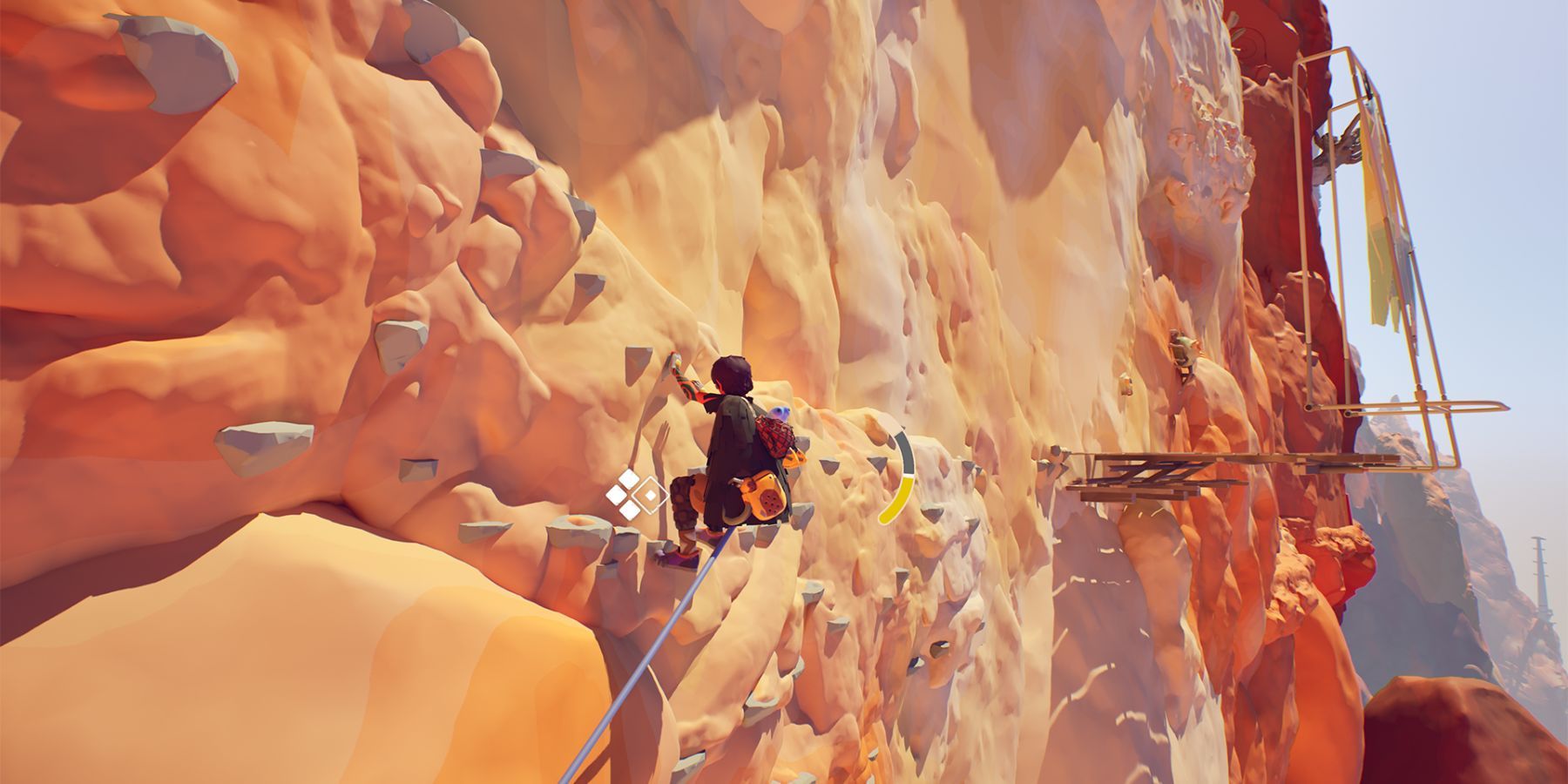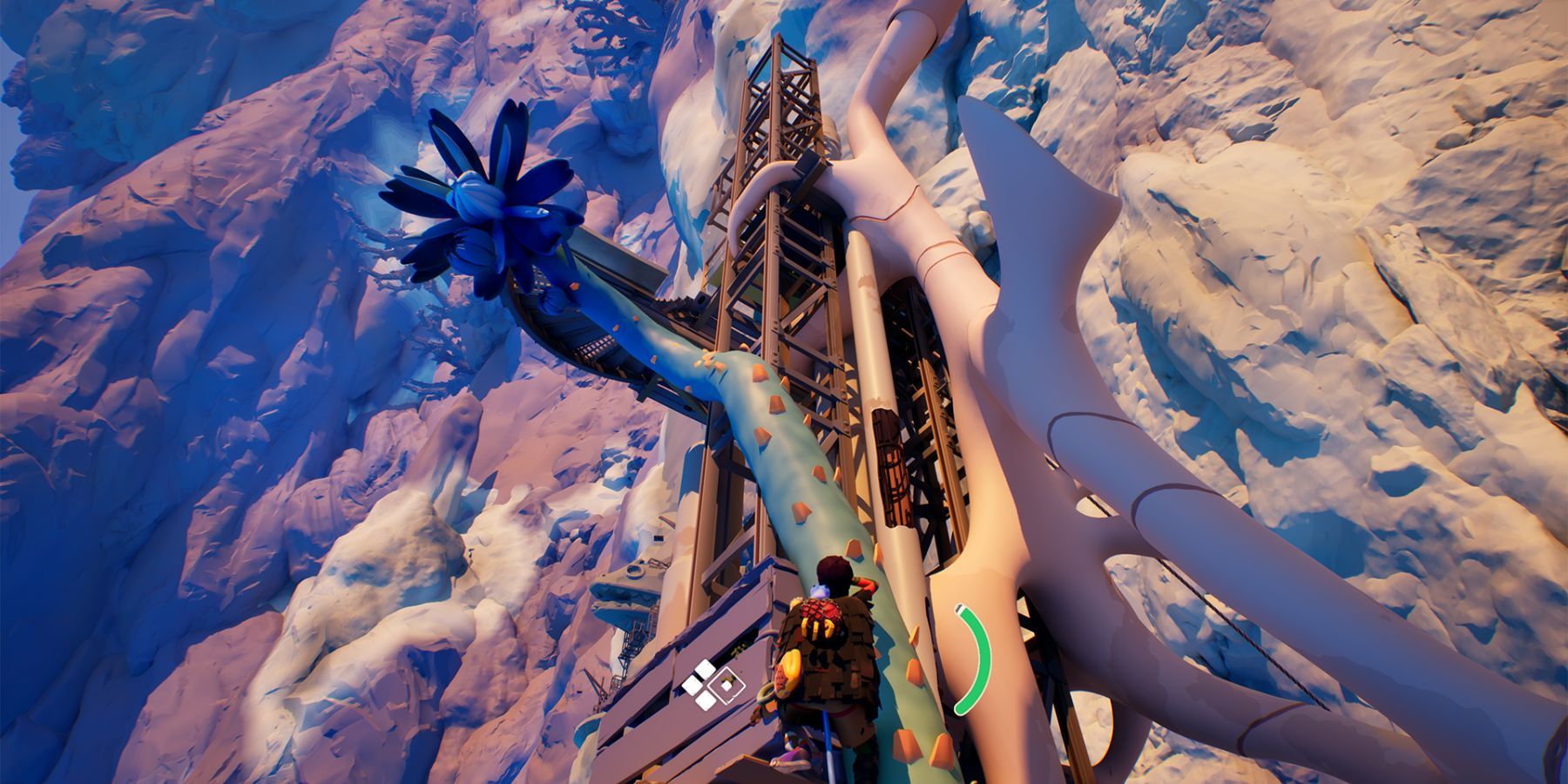Jusant is an upcoming action-puzzle game that melds climbing mechanics with meditative, relaxing vibes. Coming from Don't Nod, the studio behind the original Life is Strange games, Jusant puts players into the shoes of a young protagonist with a cute, watery critter for company, as they try to reach the top of a tower. Yet, it quickly becomes apparent that Jusant has a deeper story to tell, but it's one rather different from what Life is Strange fans might expect.
On one hand, Jusant seems completely different from Life is Strange and a total genre shift from the developer's usual narrative, choice-driven gameplay, set against a backdrop of recent popular vertical platforming games like Only Up! That said, telling a meaningful story is something that still seems to be important in Jusant. Recently, Game ZXC played a few hours of Jusant in a hands-on preview, including the first 2 chapters of gameplay. After a challenging climb with the top of the tower still nowhere in sight, it's clear that Jusant is more than just a climbing simulator, but a game with an intriguing and allegorical story to tell connected to life, nature, and humanity.
Without going into spoiler territory, Jusant sets up an intriguing premise for its story. The game begins with an unnamed protagonist approaching and beginning to climb a tall, rocky tower in the middle of a desert wasteland. The only signs of life are the scuttling of crabs across the sand and the seaweed-adorned residue of life from a time when water once thrived. A civilization without water seems unimaginable, setting up an intriguing premise for Jusant's story and posing big questions like what happened to water and the tower's mysterious civilization? It's a question that's part of the puzzle platforming game experience that Jusant presents, as players must climb to figure out what happened, while working out where to go via many different pathways. After a short cutscene, players begin Chapter 1 near the bottom, and the only way is up.
At first, Jusant's climbing controls can take a bit of getting used to, as players use an independent control of hands system similar to games like Grow Home, using the mouse if playing on PC, combined with WASD to reach up, down, left, or right. Although the game tells players to use a controller for the best experience, it's not essential, as climbing quickly feels like a satisfying, intuitive dance. There's also a surprising number of ways to climb or move around the terrain, as players can descend cliffs in a rappel-like movement by pressing F or pulling themselves back up with R.
There are also moments where players might need to swing out far and wide, running alongside walls Prince of Persia-style to reach new areas in Jusant's stunning level design. Further along, players can encounter other mechanisms like rope swings to swing higher and further, as well as zip lines. Accentuating Jusant's level design is the immeasurable scale of the vast tower and its sandy, unusual domains. It can also be a pretty quiet climb except for the sounds of the wind and the occasional spot of wildlife surviving the tower's dried-out, nautical vibes. That's until its peaceful and melodic music steps in when players discover something significant or make notable progress.
As well as scaling the tower's exterior, players venture into caverns within the structure, moving in and out to discover collectible letters or notes that reveal more about the story. This approach really complements Jusant's environmental storytelling. Although players can adjust their gamma settings, some darker cave-like areas could benefit from a torch or potential illumination from the water Ballast companion. However, it seems that lightning in darker areas is something the developers could address, so hopefully, minor fixes will make darker areas more approachable.
Players get to see more of what their charming and video game companion made of water can do upon finishing Chapter 1. It acts as a tool to help players find their way by revealing hidden pathways, such as climbable vines, when not adorably rolling on its back. When it comes to the puzzle side of things, it largely revolves around finding the way forward, making the Ballast's abilities invaluable. There are occasional visual markers in the landscape that indicate where players might move next, like the presence of a wall piston, but it's essentially up to players to freely figure out where to climb.
Sometimes, it might mean placing additional wall pistons to get a better angle or a launching point to jump up to reach a wooden ledge. Other times, it might mean using the companion to locate clues or secrets. As players progress, Jusant's vertical climbing mechanics have some increasingly challenging moments, and there's a real sense of achievement and reward when players reach the top of the next ledge after a struggle. Stamina also plays a big part. Although players cannot fall and die with the game's rope attachment tool, it's possible to slip and fall when stamina reaches too low. However, players can briefly rest to rebuild it and add up to 3 pistons to support their climb.
From a technical standpoint, Jusant performs very well, considering players can climb or attach onto almost any, but not every, surface in a way that's comparable to Zelda: Breath of the Wild's climbing mechanics. It was possible to drop too far and potentially get partially stuck in a crevice while trying to find the way to go, but on the plus, the game still enables players to jump out of odd positions to continue. At large, we only encountered one minor bug that prevented us from exiting a cutscene, but it was easily fixable by reloading the previous checkpoint. No doubt minor issues like this will get ironed out once the game is finished.
Jusant's pace is pretty slow, but that's deliberately so for players to climb at their pace. Climbing higher also gives a sense of wanting to find out more as each Chapter unfolds, challenging players to see how high they can go and whether they might reach the clouds or beyond. There's also an intriguing sense of mystery around the tower and Ballast's origins, supplemented by the environment. During the climb, collectibles might sometimes feel sparse for those who like receiving regular rewards, and certain interactions might seem tricky to make sense of. However, there's clearly more to unfold, and equally, the climbing experience is all part of a rewarding sense of achievement, especially when getting past testing terrain.
Overall, Jusant meditatively drip-feeds players intriguing lore that may leave them wondering and wanting to know more. The pacing might not be for everyone, but for those who enjoy non-hand-holding games with environmental storytelling, a mysterious story, and a cute companion, Jusant could make it a worthwhile venture.
Jusant is set to be released in Fall 2023 for PC, PS5, and Xbox Series X/S.



